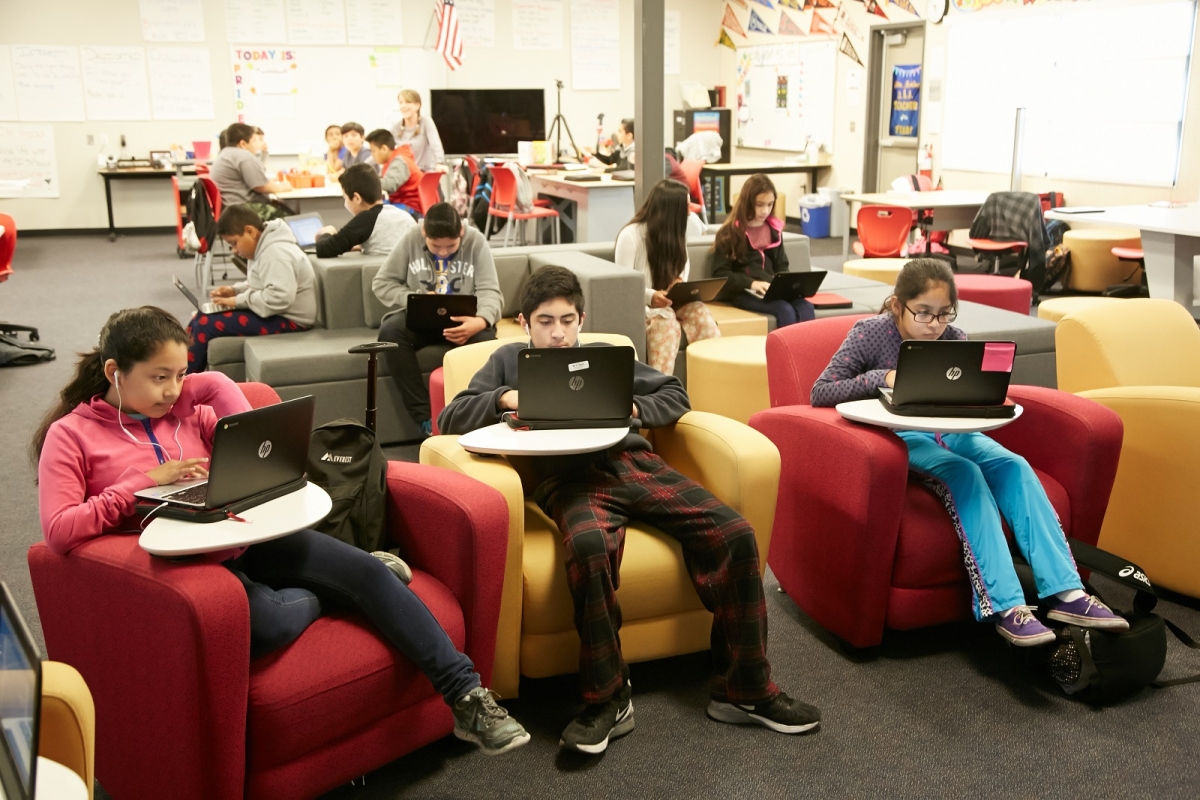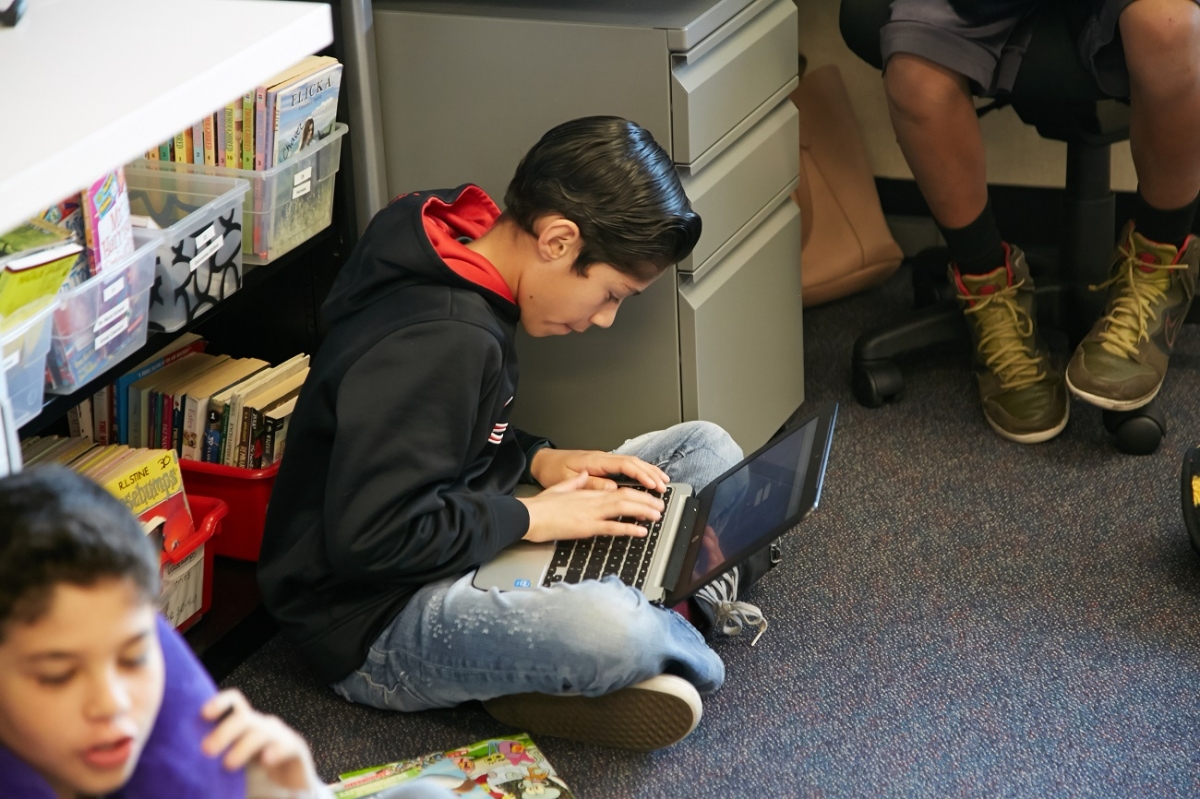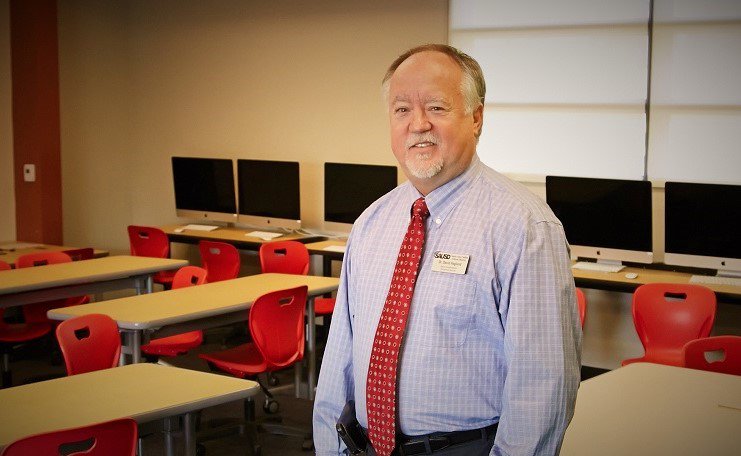Dr. David Haglund is the Deputy Superintendent of Educational Services at Santa Ana Unified, a Southern California district where 91% of students are eligible for free or reduced lunch and 60% are English language learners. In this interview, he discusses how he and his team are guiding the district through a transition to digital curriculum with the goal of “ensuring that all students have access to technology-enabled learning resources at school and at home.”
What was the spark for the technological transformation of Santa Ana USD?
I think that the true transformation going on here in Santa Ana is about personalization and enabling choice in both teaching and learning. That work is being facilitated with expanding access to various technologies. Technology enables personalization in a very powerful way, as evidenced by how people interact with the world nowadays.
What tech tools have been especially useful in personalizing students’ learning in the classroom?
Chromebooks: Each child has access to a device, which enables them to work on individual projects or collaborate with peers as appropriate. These light devices are easily carried from room to room and from school to home, enabling learners to stay connected to their classroom resources and personal learning networks.
Google Apps for Education: The collaborative nature of our work in personalization is fueled by the connective nature of the Google platform. We are reducing printing costs and have reduced that amount of student homework that is “eaten by the dog” or lost
in a backpack.
FlexCat: One of my favorite new tools. These desk pods have enabled teachers to leverage proximity in their classrooms, observe and overhear student small group conversations from across the room, and even insert themselves into a small group conversation without physically joining the group. If a small group has a question, they can push a button on the pod to summon the teacher in person or remotely.
One of your mantras is “It’s not about the devices, it’s about access.” How are you providing access to digital curriculum for all students?
We started first by instituting a BYOD policy in the schools. There is no need to provide a device to a student who already has one that they would prefer to use. We simply had to adjust our policies and allow for their use on our networks. This shift allowed us to focus scarce resources on the students who did not have access to the increasing number of digital resources accessible at school and
at home.
From there, we looked to ensure that students have Internet access at home or very nearby. In some cases, they could hook up to a home network. In other cases, they could do so at a relative’s home on the same street. In cases where there was no access, we have begun to provide wireless hot spots that can be checked out to the family. We have also begun conversations with the city regarding deploying a citywide wireless network that ties existing networks together to expand the reach of the various wireless networks.
What are the additional challenges of a district with 60% ELLs, especially when it comes to adopting new technology?
Our parents—both English and Spanish speakers—need training on how to best manage the computer resources in the home, including how to mitigate risks due to theft, neglect, improper training, or inappropriate content. Because so many of our families speak Spanish, we have always developed training and resources in both languages.
Each school provides parent workshops and related computer training sessions. A CyberSafety course is required for both the parent and student prior to checking out technology to take home. There is a big push in the weeks surrounding the beginning of school, and those classes are very well attended.
What other technology or best practices are you using to help ELLs and LTELs?
Students and parents have learned to access Google Translate to assist with navigating the Web or words with which they are unfamiliar. Online or software-based language tools have been deployed at school and at home, and families are encouraged to share these tools. In classrooms, digital curriculum supports the ELD instructional program, giving students opportunities to record and play back their reading in order to refine pronunciation and hear errors they may be making. These tools also deliver just-in-time, personalized academic interventions that are accessed during classroom rotations and/or during our after-school program time.
How did you handle PD in preparing teachers for all these changes?
Holding to our commitment to support personalization, the district has transitioned to a PD model that encourages each teacher to identify and pursue a course of training that is most relevant to him or her. Our centralized PD staff provides a menu of choices that is informed by teacher surveys. We train throughout the school year and include summer “camps,” mid-year “mini-conferences,” and a quarterly EdCamp that allows teachers who are already proficient to drive the discussion and dig deeper into applications that they have curiosity about.
Has the shift in teaching and learning created any negative response from the community?
No. In fact, I would suggest that the community is driving the change. When we entered into our LCAP process, we asked students, parents, and community members what we were doing right, what we needed to stop, and what we needed to do differently if we hoped to see all students successfully complete high school and move on to college or a career of their choosing. One of the key goals established by the process was ensuring that all students have access to technology-enabled learning resources at school and at home. We listened, and are well on the way of hitting that target by June of 2017.
What’s the next step in Santa Ana USD’s transformation?
We are working hard, in short-cycle iterations, to improve our practice and to learn. Students, teachers, and school leaders are fully engaged in this work and providing critical feedback. We will continue to develop our digital project-based learning curriculum in partnership with the Buck Institute and the SCALE project at Stanford, and will continue work towards delivering a competency-based learning program at both the elementary and secondary levels.
I am excited that micro-credentialing and digital badges will be a part of that process, which will lead to multiple different diploma tracks that will be aligned to high-interest career fields. We will continue to promote school choice and develop a portfolio of school and program options for parents and students.
Download our Journal Poster for more information and a special free poster for your staff break room or library.











